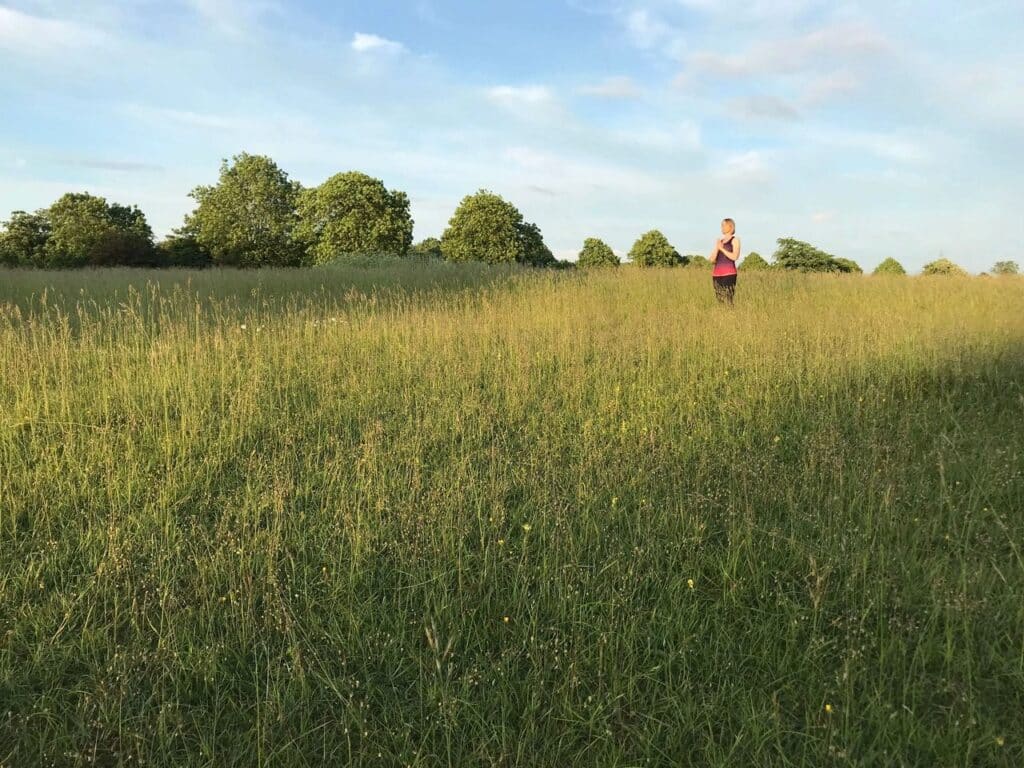Restorative yoga is really helpful in our frenetic world as it encourages our bodies to surrender and relax, something we’re not generally used to doing. Restorative postures, which are often supported by blocks, blankets and bolsters, are designed to maximise comfort and allow practitioners to fully let go, which is why they are typically held for longer – at least five and up to 20 minutes at a time. They are also arranged with the head below or at the same level as the heart which helps quieten the body and the brain.
To many frazzled Western yogis, minimising effort in such a way can feel counterintuitive, but there are real benefits to what may seem like doing very little.
Sympathetic vs parasympathetic
Aside from relaxing the body and mind, restorative yoga can boost immunity and improve the body’s capacity for healing. It slows the heart and lowers blood pressure. It also activates the parasympathetic nervous system and works to balance out the highly-charged sympathetic nervous system which is activated when in a “fight or flight” state. Most of us don’t see the daily stresses of modern living as a threat, but our bodies haven’t developed that cognitive knowledge yet. Any stressful situation provokes that physical response to a greater or lesser extent. Running late, a glitchy computer, being on hold on the phone in order to try and speak to a real person – these are all situations our nervous systems perceives as threats.
Spending so much time in a state of high alert can be damaging to our systems. The physical consequences of chronic stress can include high blood pressure, migraine headaches, and exacerbation of fibromyalgia, digestion issues – not to mention weight gain. It makes sense. If we’re in fight or flight mode, we can’t be in a state of rest and digest (the opposite parasympathetic nervous system state, in which we are relaxed).
But fear not. Help is at hand with restorative yoga which is deliberately designed to induce a state of calm relaxation, where the parasympathetic nervous system takes over and our bodies can rest, digest and restore.
Props not necessary
If you’ve ever attended a restorative yoga class, you’ll know that a myriad of props (think bolsters, sandbags, cushions and blankets) are employed to help you completely relax in such a way. There is no doubt that they are magical in helping you achieve this. But this should not put you off trying this at home. As you’re reading this blog I’ll assume you have a yoga mat (although you don’t actually need one for this), but what if you don’t have a bolster? No matter. All we need here is a blanket. And if you don’t have one of those please treat yourself; we do live in the UK after all. Keeping props to a minimum keeps fuss to a minimum. Move slowly. Enjoy.
No fuss restorative yoga sequence
- Savasana. The ultimate restorative yoga pose. Try this with a folded up blanket over your belly, which will help you relax into the ground and keep your focus on your breathing. Alternatively you can roll up your blanket and place it underneath your knees.
- Legs up the wall. Take your blanket and place it on the floor by the wall. Sitting sideways onto the wall with your bottom on the blanket swing your legs up. Your back and shoulders will be a couple of inches lower than your bottom on the floor behind where the blanket is. Let your feet relax. You can have your legs extended up the wall together here, have your legs fall out wide to create a v-shape or bring the soles of the feet together to create a diamond shape. Adopt whichever option feels most comfortable to you.
- Fallen tree pose. Roll your blanket up and put it by your right hand side. Lying on the floor, bend your right knee up and let if fall out towards the floor, resting on the blanket. Repeat on the other side.
- Child’s pose. Rest over your rolled up blanket for comfort.
During these oh so simple postures observe your breath in order to help you relax but avoid controlling it, which can in turn create tension. Unlike in some yoga styles breathing is not an activity we need to accomplish here. It is simply a process we allow to happen. Observe and welcome in every new exhale and simply release with every exhale.
Give yourself as much time as possible in each pose – try for at least five minutes. And if ten minutes is all you have, just do your favourite pose. Even that will recharge your batteries and help your parasympathetic nervous system kick in. When that is dominant, your heart rate drops, your blood pressure lowers and your body and mind are put into a state of calm and healing – facilitating a whole host of hormonal benefits including, believe it or not, losing weight!
Restorative yoga in Bristol
If you would like to experience the magic of restorative yoga my new monthly relaxation sessions start Sunday 8th December, 6-7.30pm at Sensate Spa and Studios in Henleaze. I’ll be sharing a variety of nervous system regulation techniques designed to soothe your body and soul leaving you feeling restored and ready for the week ahead.


